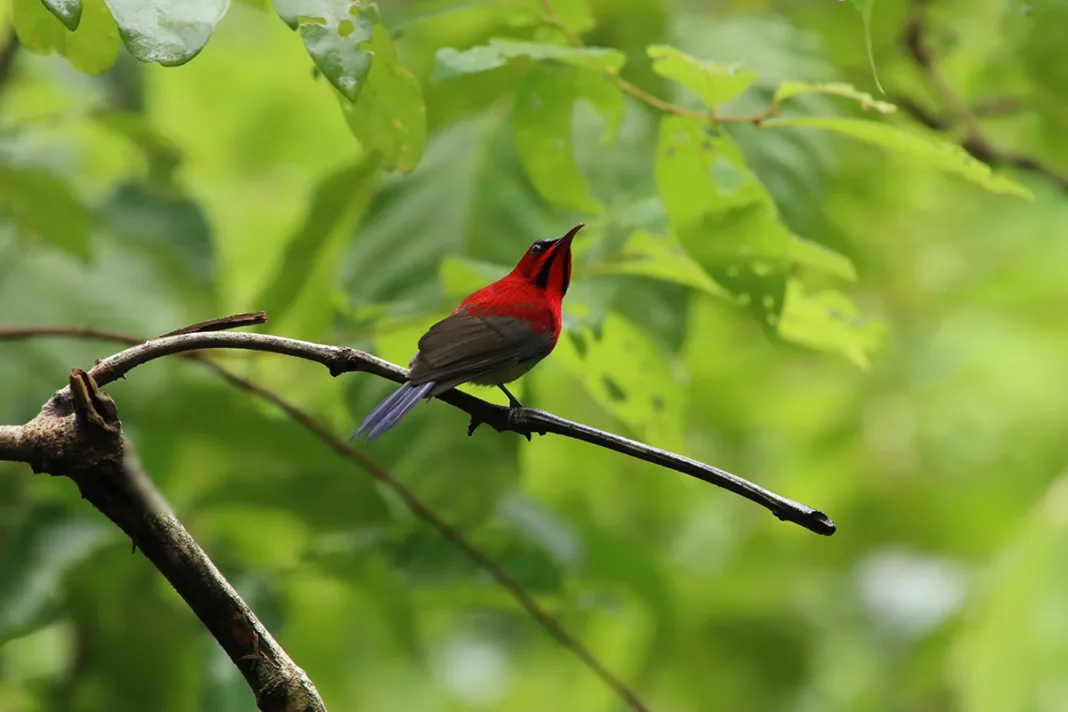Never afraid to take on the rare and unfamiliar species, Geoff Gradwell has drawn immense pleasure over the years from keeping many beautiful hardbills from the Neotropics. And in fact his experience has paralleled that of scientists who have reclassified some of those same birds as softbills!
It could be assumed from my previous articles that my main interest has always been in softbills and nectar feeders. That assumption is correct, but I have always had a strong interest in what are known in the exhibition world as rare seedeaters – especially the buntings and finches from the Americas.
In the late 1960s and 70s, it was always advised to begin with the common seedeaters and spend a few years with them before moving onto the more delicate and expensive rares. I can only speak from my own experience, but I had more problems with the common species, especially the African waxbills, which could be an absolute nightmare.
Among the first rare seedeaters I owned were the twinspots and violet-eared (grenadier) waxbills (Uraeginthus granatinus); as long as they had access to some type of insectivorous food and a few mealworms every day, as well as a dried/soaked seed mix, I found them relatively easy to establish.
The one family that is without doubt the most difficult and frustrating to establish were the nigritas, which older fanciers may remember as the negro finches. Over the years, I have kept two species: namely the grey-crowned nigrita (Nigrita canicapillus) and the white-breasted nigrita (N. fusconotus). These birds lived on a diet of 99 per cent livefood and on the odd occasion that they could be persuaded to accept anything else, within a few days they’d go back to livefood only. Of all the birds I have kept in the past 56 years, these were the birds that would drive you to distraction. I could see them slowly fading away and could not do a thing about it. I have always had the strong opinion that these birds should never have been imported, since very few if any survived a first moult in captivity.
Over the years, I have owned a few different species of bunting, such as indigo (Passerina cyanea), painted (P. ciris) and lazuli (P. amoena) and, indeed, bred a number of them. However, it is my opinion that the one thing that separates them, along with the majority of New World seedeaters, is that if they are treated as softbills any problems that may occur diminish rapidly. I had a number of buntings in an aviary alongside some tanagers and honeycreepers, and even though the buntings had access to a foreign finch mix and clean running water, all I ever saw them consume was the home-made softfood, fruit and sponge cake soaked in nectar. I have had birdkeepers tell me that their buntings consumed nothing but seed and water, but when they have nothing else to eat they really do not have much of an option but to live on just seed and water.
My favourite South American seedeaters are the warbling finches. I have kept about five species of warbling finch, including the collared (Poospiza hispaniolensis), pretty (or cinnamon) (P. ornata) and the black-and-chestnut (P. whitii), and found their subtle shades of black, white and brown more attractive than some of the more brilliantly coloured seedeaters I have kept. What they lack in colour they more than make up for in character. In 1982, I was lucky enough to breed the collared warbling finch. The chicks were reared exclusively on livefood, but that was hardly surprising, as I have never seen a warbling finch take dry seed when there is an alternative that was being fed to softbills. I have always been of the opinion that owing to their diet and habits, they should be classified as part of the tanager family (Thraupidae).
I now conclude this article with the bird that is without doubt my favourite seedeater: the rhodospingus or crimson-breasted finch (Rhodospingus cruentus). From the 1970s until the import ban came into effect, I always had at least one pair of these finches in my collection. In my experience, they take about three years to come into full colour, which means they are a long-lived bird. I have kept them for up to 12 years. They were yet another bird that, if given the choice, would not take any dry seed. I was always told that they needed to be colour-fed to stop the crimson cap and chest from becoming orange, so in 1979 I conducted my own experiment.
At the time I owned four pairs of rhodospingus finches, so two pairs were placed in an aviary with a collection of seedeaters that were on a basic seed diet with a small amount of softfood and livefood. The other two pairs were in an aviary with a mixture of tanagers and honeycreepers that had no seed whatsoever. At the end of two years, those in the seedeater aviary had lost all the crimson, which had become orange, yet those in the tanager aviary were as crimson as they were on the day they were imported! The two orange pairs were then placed back on a varied softbill diet and after 12 months were back to crimson once again.
In the 1980s, I argued that the rhodospingus finch should be classified as a tanager and was told time and time again that it was a finch and a finch it would stay. I was, therefore, pleasantly surprised recently to be informed by a close friend and authority on the subject that the species has now been reclassified and is now part of the Thraupidae (tanager family). So after all those years I suppose it must now be called the rhodospingus tanager and not before time.
Geoff Gradwell is the secretary of the Scottish Bengalese Fanciers Association.
Find more news and articles like this on the Cage & Aviary Birds website. Subscribe to Cage & Aviary Birds magazine now.


